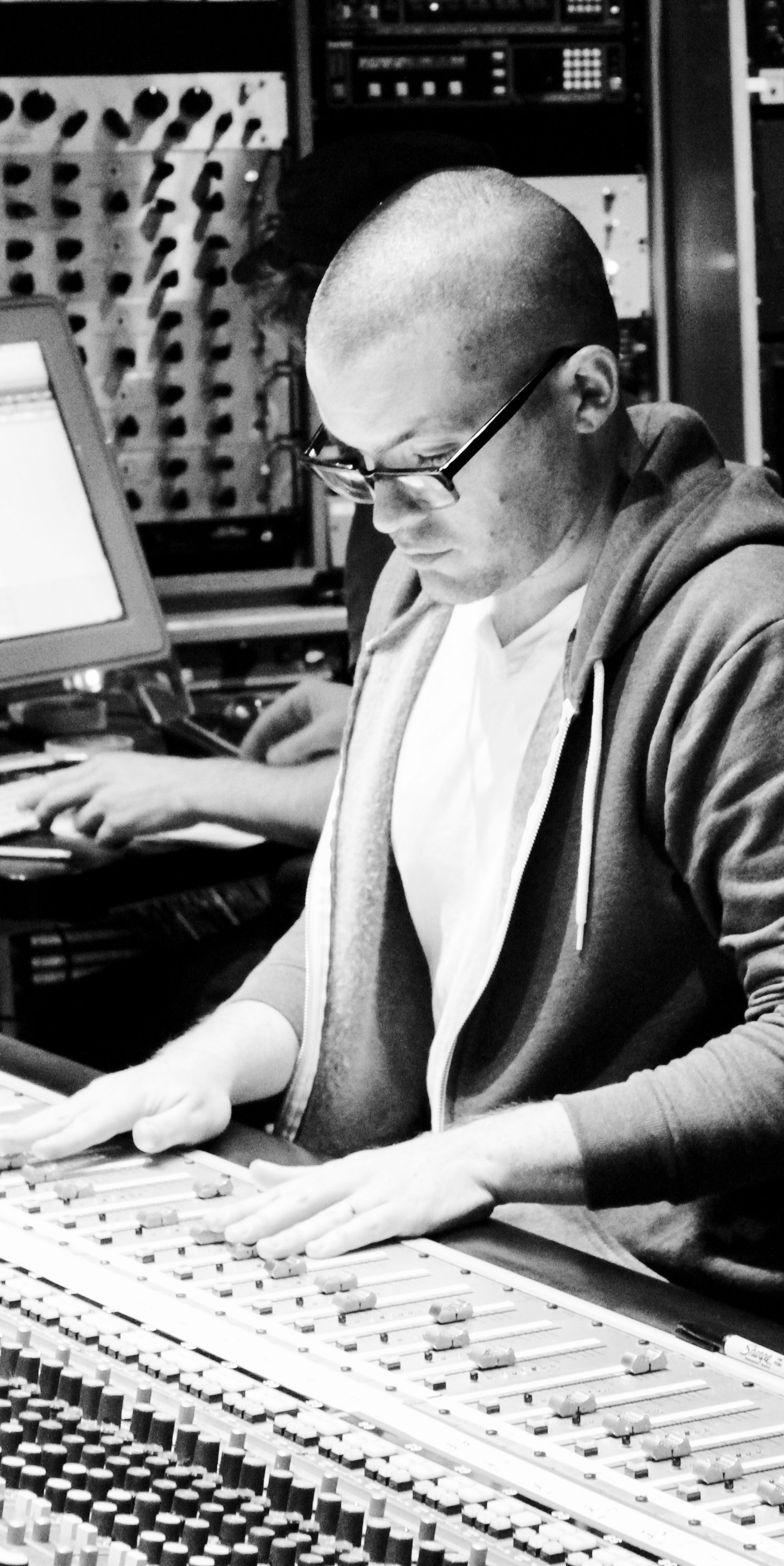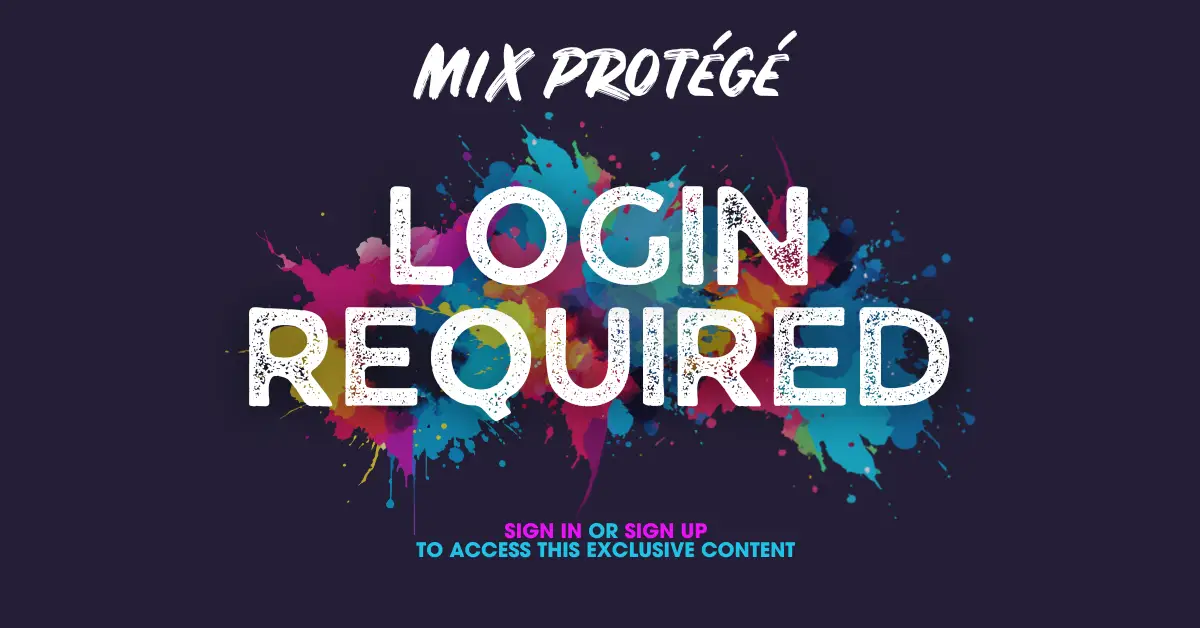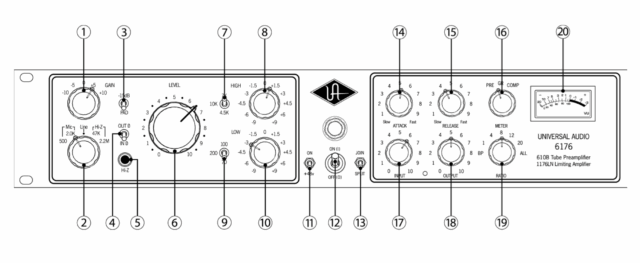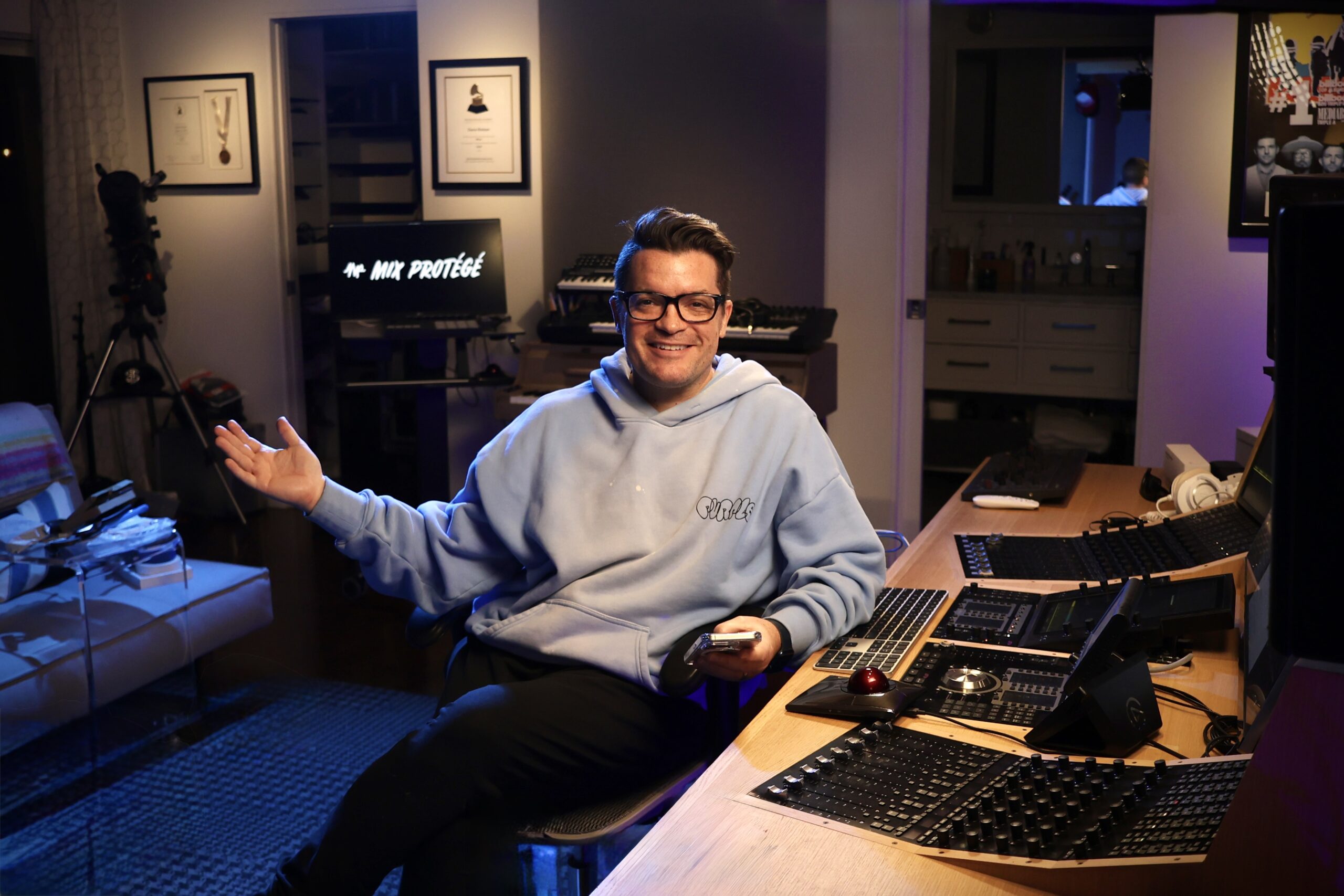Forum Replies Created
-
Hey @barrose! Love this question, and thanks for the thoughtful context!
You’re comparing a few solid options: your current UAD 6176 (which I also own and recommend often), your Apollo Solo, and the Neve 88M you’re considering. I know the 6176 is on loan or going away, so the core of your question is: Is the 88M a step forward or a step back?
Here’s my honest take…
TL;DR: Preamp ≠ Magic … EQ + Output Control = Magic
The Neve 88M is no doubt a high-quality piece of gear. But so is your Apollo Solo, and honestly, when it comes to just mic preamps, the differences between most units – even boutique ones – are often overstated, especially in a clean, low-gain scenario like vocals or acoustic guitar. Both the Solo and 88M offer clean, low-noise gain with solid conversion.
But what I personally really care about in a preamp isn’t the name on the front, it’s:
-
A bit of EQ (even just a top-end shelf or low cut)
-
An output fader (so I can push the input gain and back off the output for harmonic saturation)
That’s why I love the 6176. With input and output controls, you can drive the tube preamp for tone and still maintain proper recording levels … something neither the 88M nor Apollo Solo really let you do.
If your 6176 is going away and you want to replace both your interface and preamp in one move, then sure, the 88M can work, but it’s not likely to sound radically better than your Apollo Solo. Without EQ or output trim, it’s just… gain.
And when you’re not pushing gain into breakup or leaning into transformer coloration, most preamps (yes, even Neve) are going to sound more alike than different.
My Real-World Suggestion:
If it were me, I’d either:
-
Keep using your Apollo Solo and take full advantage of the UAD Console to add EQ/compression on the way in (just like you’d print with a 6176), OR
-
Invest in a more full-featured channel strip, something with EQ and output control that lets you shape your sound before hitting the DAW
$1,200 is a lot to spend on another “clean” preamp when you already have one in the Apollo. That money might go further toward a versatile mic, plugin suite, or even a 6176 of your own!
🎛️🎚️
Ultimately, the Neve 88M is well-built, but I wouldn’t expect it to be some massive sonic upgrade over what you already have unless you’re specifically craving that Neve badge or want to simplify your rig with an all-in-one interface.
Hope that helps! And would love to hear what others think, especially if anyone’s using the 88M and has A/B’d it with UA gear!
⚡️ Dana
-
-
That’s a great idea! I’ll see if I can put together a lil 1176 walkthrough sometime soon. I’m sure lots of people would dig that.
Meantime, I mention the 1176 basics (including the setting I use practically 99.9% of the time) around the 17min mark in the “Compression by Ear” livestream. Lots of other good compression tips in there too that can be applied to the 1176.
NOTE: login required for this one 👇
mixprotege.com
Login Required LOG IN or REGISTER to access this exclusive content You’re ONE Step Away → You’re ONE Step Away ↓
-
Hey @bigchrizzle! Such a great question, man. Fabfilter Pro-MB is my favorite and I use it constantly.
To me, what sets Pro-MB apart from the Waves options is the frequency bands are not fixed — each band is completely sweepable throughout the entire frequency range. Also, you aren’t limited to 4 or 6 bands, as is the case with the Waves C4 and C6 respectively.
Basically, with the Pro-MB, I feel like when I open it up it’s a blank canvas and I can add bands wherever I like, whenever I like, and can sweep them around anywhere I want, alter any of the bandwidths/crossovers, independently solo/mute each band, add sidechain input, and it even has a blend/mix knob.
The Waves and McDSP offerings are excellent, competent, efficient, wonderful tools! Tho in my opinion and experience they’re better suited for broader tonal and dynamic shaping, whereas the Pro-MB can ALSO be extremely surgical. Here’s another analogy: Waves and McDSP multi-bands are like a Pultec EQP-1A; whereas Fabfilter Pro-MB is like a GML 8200 parametric EQ. All are amazing tools with unique superpowers!
Hope these rambling thoughts are helpful! haha
Which is your favorite multiband compressor among the options you already own?
-
That’s sounding really nice, @pat! Great work!
Will this be for a solo piano recording, or a framework for additional overdubs like bass, vocals, drums, etc.? If it’s solo piano, I might try adding a bit more of the Right channel — via fader or mono gain plugin — so the image of the whole piano feels more centered. I often tweak the L/R balance on a piano during recording or mixing to even things out, depending on which “range” of the instrument being played, especially for solo piano or piano-dominant records, so that the listener doesn’t feel lopsided.
Only other thing I notice is it’s a bit quiet as a master – easy fix with some more fader gain and/or lookahead limiter on your master fader, like the Fabfilter Pro-L2 or Waves L2 or other similar tools.
Keep up the good work, man!
-
Dana Nielsen
AdministratorMarch 8, 2025 at 11:35 am in reply to: Question about using compression for sustainAwe, I’m so glad, man! And I can’t wait to hear the results of your experimentation (i.e. COMPRESSION DOMINATION!!!) 😂
-
Daniel!
Such a keen observation, man. I notice the same thing and for YEARS I avoided using the lookahead feature for that very reason. However, that has changed in recent months as I’ve found the lookahead is really quite useful! (Albeit not my go-to initial setting)
My Pro-L2 “user default” setting, called DN START, has pretty much no lookahead enabled; attack around 2:30; release around 9:00. I raise the gain/threshold as high as I can push it until the mix starts to break up, then back it off slightly to a more reasonable setting. I often hold the Shift key while finding this “break up” point so that the output volume remains constant and I can easily keep an ear out for compression artifacts and distortion without being fooled by loudness.
Once I have the gain set I preview all the different modes (transparent, dynamic, punch, etc.). Each of those modes sounds quite unique and I find that for each song I find one that feels like magic and helps the mix in some way.
This would be my baseline ideal setting. If the mix sounds awesome and is loud AF and punchy and awesome then I’m done! But … if it’s not loud enough and starts to distort or crumble when I add more gain, THAT is the point at which I start messing with attack, release, and/or lookahead.
I might turn the attack faster, say 9:00, and see if the crumbling distortion artifacts disappear. If not, I’ll slow the release, say 3:00 or whatever feels appropriate for the tempo of the song so that the gain reduction returns to 0-ish by the next snare or kick.
If those adjustments fix the crumbly artifacts yet I feel I’ve lost too much transient punch and snap, THEN I’ll crank up the lookahead, say btwn 9:00 and 12:00, while increasing the attack time as much as possible — back to 2:30 if possible, or more — to recover those transients. I’ve been happily surprised by the result!
By following this process I get to keep my precious “loud AF” volume, without crumbly compression artifacts, while maintaining most of my glorious snappy transients.
Give it a try and lemme know whatcha think!
🕺🏻⚡️🤘
-
Haha – thanks, Sharon! (and sorry for the delayed response!)
-
Yay! Glad u got some good tips from it, @barrose!
A) You can actually drive the preamp input (1) and turn down the output (6) of the preamp independent of the compressor. You can, for example, bypass the compressor and use the Preamp Out (XLR on back of the unit) straight to the line input of your Apollo.
B) yep!- you can also link the Preamp Out to the Compressor In using the front-panel Join switch (13). 1-3db of reduction at 4:1 would be a safe conservative setting for natural sound. But don’t miss the more exciting/hype-y sounds you can get with that 1176-style compressor! The setting I use for almost everything on any 1176 is Slowest Attack, Fastest Release, 4:1. Push the compressor input until it sounds too compressed, then dial back the input to taste, always adjusting the compressor output as needed to avoid digital overs in your DAW.
Oh, and here’s a link to the manual – Page 3 has a great description and overview!
-
Dana Nielsen
AdministratorJune 21, 2025 at 5:42 pm in reply to: FREE UA POLYMAX Synth – Flash Sale!Haha same!
-
Dana Nielsen
AdministratorJune 21, 2025 at 1:25 pm in reply to: FREE UA POLYMAX Synth – Flash Sale! -
LOL – heck no, man! Ask away! That’s what these forums are for. Questions like yours help me identify topics that folks wanna learn more about – that way I can make the most useful, helpful vids, forum replies, blogs, etc. Chances are if you’re asking a question, someone else has the same question in mind!
Selfishly, one of my favorite reasons for building out this space here at Mix Protégé is when people ask me technical questions in MP or out in the world — people hoping to learn about a certain aspect of recording, mixing, or a piece of gear — I can be like, “oh, here’s a link where we’re talking about that! Hop on in!”
-
Right on, man, my pleasure!
I definitely do a lot of transient shaping and “management” on my individual tracks and submasters before anything hits the Pro-L2 on my loud print bus. Things like compression, console- and/or tape-saturation, and occasionally distortion or clipper plugins help me contain and shape extreme transients at various places along the signal path before the master limiter does its thang.
It’s possible that accounts for the difference in our fav Pro-L2 settings.
Also … this thread has a Pro-L2 video I made which shows my typical workflow, and also includes some good discussion on the topic! Enjoy!
https://mixprotege.com/forums/discussion/limiter-mastering-question-please-advise/
mixprotege.com
Limiter/Mastering Question - Please advise
Dearest Mix Geniuses!I have a question that I’m hoping you all can help me understand more clearly.It is my understanding that it is generally good…
-
Dana Nielsen
AdministratorMarch 8, 2025 at 11:38 am in reply to: troubleshooting – track on spotify sounding quieter than expectedYou bet, Joe! And yeah, you’ll dig that Streamliner plugin – it’s super revealing when you toggle through the different algos, even simply as a tool to compare the sound of different music services for someone deciding which one(s) to subscribe to!
-
Dana Nielsen
AdministratorMarch 7, 2025 at 2:56 am in reply to: Member Poll: Trends in file delivery when working with remote session musiciansDUUUUUDE! This is genius! Thanks for this great tool tip!! 🙌
-
Dana Nielsen
AdministratorFebruary 24, 2025 at 12:05 am in reply to: Member Poll: Trends in file delivery when working with remote session musiciansyeah usual go-to is the Trim plugin, tho I also use this free plugin called Flipper, which is simple and effective (and shows me without having to open the plugin whether the phase has been flipped or is normal (bypassed)
refusesoftware.com
reFuse Software: Tools for music and audio creation, including the Lowender and Bucketverb plugins.





Social Media